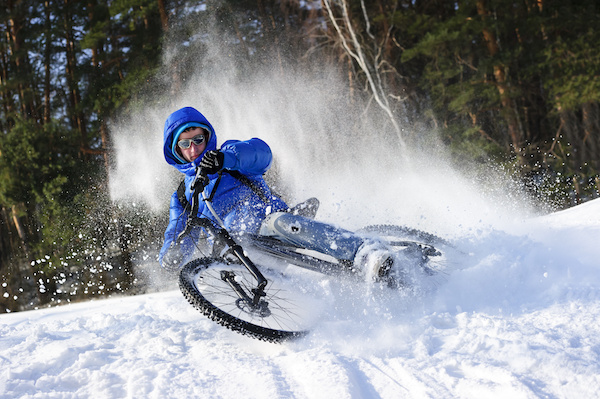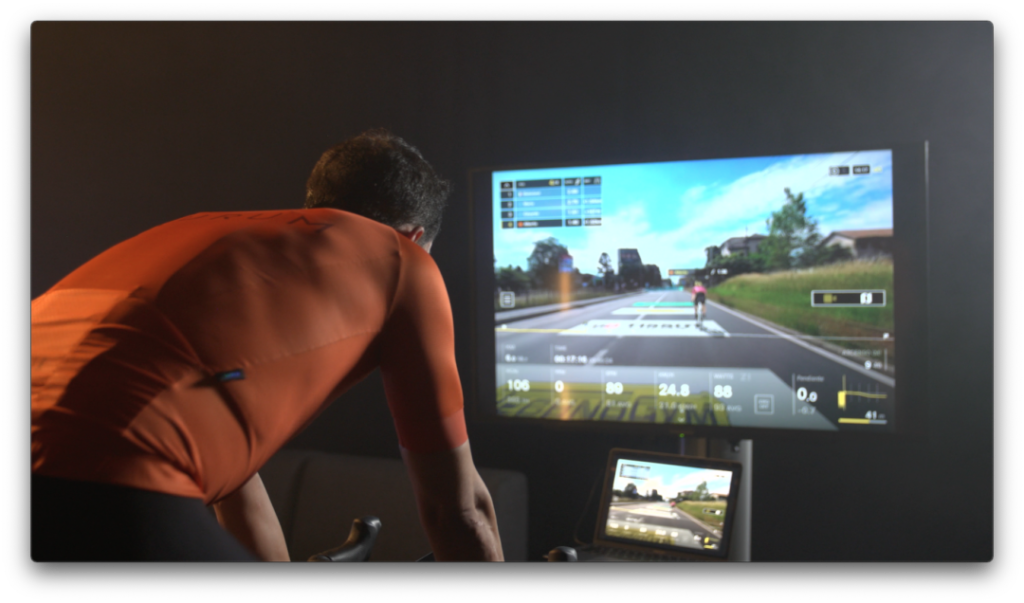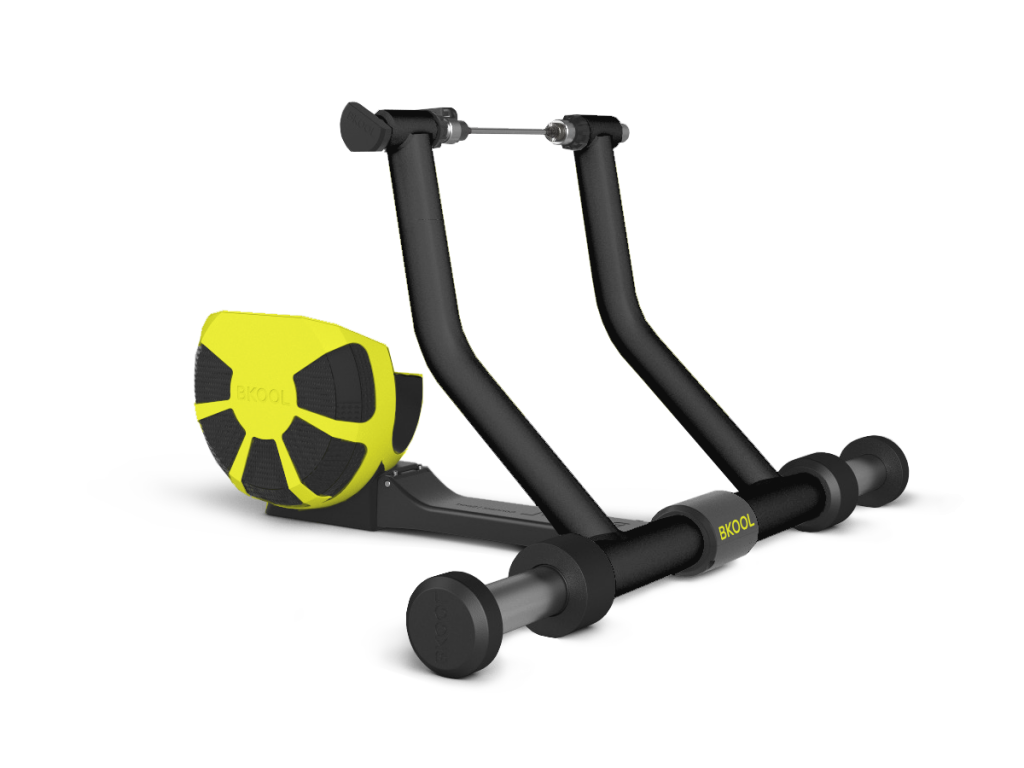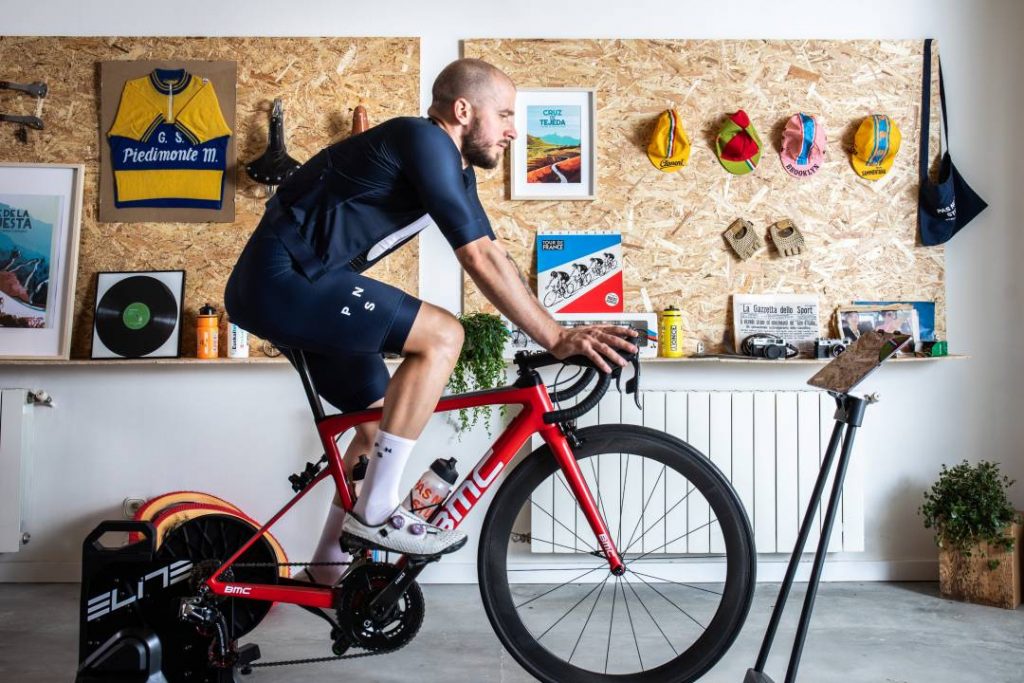Surely everyone reading this who rides a bike has at some point felt the sensation of “freezing” while on a bike. The low winter temperatures, the speed of cycling, the wind, and sometimes the rain tend to make a bad combination.
We need to be clear that when it’s really cold, it’s practically impossible to fight it, and that unpleasant feeling is inevitable. However, knowing how to choose the right clothing based on the weather will undoubtedly help make our training more comfortable, and our health will thank us for it. Moreover, if we manage to wear the right clothes for optimal body thermoregulation, our performance won’t be negatively affected.
Nowadays, clothing brands offer us a wide variety of garments, fabrics, and styles. I will speak from my experience about the clothing combinations I consider the best for training in winter.
LEGS: Usually, a long bib is sufficient. There are thinner or thicker ones, even with fleece lining inside. Choosing the right one, as I mentioned, is generally enough. When spring is approaching, I sometimes like to wear a short bib with leg warmers, so I can switch to shorts halfway through the training if I get warm.
UPPER BODY: This is the most complex due to the number of possible clothing combinations. I usually like to wear three layers:
- The first layer is an undershirt, usually thin, close-fitting, and breathable so it doesn’t soak up sweat. If it’s very cold (below 5ºC), I wear long sleeves, and if it’s above 5ºC, I opt for short sleeves or a tank top.
- The second layer is a long-sleeve jersey, also breathable. I like this garment not only because it doesn’t get soaked with sweat but also because I can make use of the rear pockets, as I tend to carry quite a few things, as you’ll see later.
- If the temperature is above 13º-14ºC, the previous two layers are usually enough (or those two layers with a thin vest). But in winter, that’s not common, so on top of the undershirt and long-sleeve jersey, I usually wear a third layer. This third layer, when the temperature is between 6º and 12ºC, is typically a thin jacket or another long-sleeve jersey, often the same as the one underneath. This way, I stay warm, but since all layers are breathable, I don’t usually get damp from sweat. If it’s colder, 5ºC or below, this third layer is a winter jacket, made of Gore, Windstopper, or something similar.
- In extreme cold, on top of the three layers, I also wear a winter vest made of Gore or Windstopper.
That said, I need to mention two garments that can be very helpful in winter, but you need to know how and when to use them:
- The Gabba-style jackets that have hit the market in recent years, which are not 100% waterproof but almost, and they provide great warmth. They are an excellent solution for days with light rain and don’t create the same “sail” effect as a conventional raincoat. However, they are usually tight-fitting garments, and if they are too tight, they can even make breathing difficult. Also, since they don’t breathe as well as other fabrics, they can cause dehydration more easily. In my opinion, they are useful either for days with very extreme weather, where it’s either using the Gabba or not riding at all, or for short and light training sessions where dehydration is not an issue.
- The traditional raincoat, which is obviously very useful on rainy days, but I carry it in my jersey pocket EVERY winter day, even when it’s sunny. It’s the best ally to avoid that freezing cold after a short stop due to a flat tire or at the top of a climb to regroup. On sunny days, putting on the raincoat for the first 5 minutes after a short break and then removing it before starting to sweat can save you from many moments of cold and more than one cold. I want to emphasize the importance of knowing when to remove the raincoat on those days when it’s used not for rain protection but as an extra layer of warmth. To use it properly, we need to remove it as soon as we feel our body is warming up but before we start sweating. If we start sweating, it’s too late, and we’ll already be soaked, which is what we want to avoid.
HANDS: There are countless gloves on the market, made from all types of fabrics—Windstopper, neoprene, Gore, etc.—but we also need to maintain some sensitivity in our hands to grip the handlebars, shift, brake, etc. For that reason, I usually have three combinations depending on the temperature:
- If it’s below 5ºC, I wear my warmest gloves, made of Gore on the outside and lined on the inside. I lose some sensitivity for handling the bike, but I more or less avoid the cold.
- Between 5º and 8ºC, I wear very thin gloves with another pair of Windstopper gloves on top. Halfway through the training, I usually remove one pair and store them in my jersey.
- Between 8º and 12ºC, I leave the house with thin gloves that I take off and put on several times throughout the training session.
FEET: On the bike, this is one of the body parts that gets the coldest because the foot muscles remain mostly still and are very exposed. Additionally, being close to the ground, if it’s damp or wet, they always end up getting some water. There are also many possible combinations to combat this.
- When it’s over 8ºC, I usually don’t wear anything extra, just a relatively warm sock and my cycling shoes.
- Between 3º and 8ºC, I also wear neoprene toe covers.
- Below 3ºC, although it’s almost inevitable to feel cold, I wear Windstopper overshoes and sometimes two pairs of socks.
- In rain and on wet ground, I either wrap my shoes in plastic wrap and then wear the overshoes, or if the ground is wet but it’s not cold, I wear latex overshoes just to keep my feet dry.
HEAD AND NECK: Personally, I don’t like wearing anything more than a helmet and glasses because everything else feels uncomfortable. However, in very cold situations, a neck warmer and an ear band under the helmet can help a lot to remove that cold feeling and protect our throat from low temperatures.
To conclude, and going back to the importance of having pockets, maybe experience or years of cycling have made me a bit obsessive, but when one of these “obsessions” saves me from a cold moment, I feel really good. So, during the winter, my jersey pockets always contain:
- Tool kit (I carry this all year round)
- Some money, a credit card, ID, and my federation license (I carry this all year round)
- Raincoat (even if it’s not raining, as mentioned earlier)
- Spare gloves on rainy days to put on a dry pair halfway through the training session
- A dry undershirt for days with climbs when I might sweat a lot, so I can change the first layer midway through the training session.
Jose Almagro Valero
Bachelor in Physical Activity and Sports Sciences
National Cycling Coach
www.josealmagrovalero.es
 Go to BKOOL
Go to BKOOL





